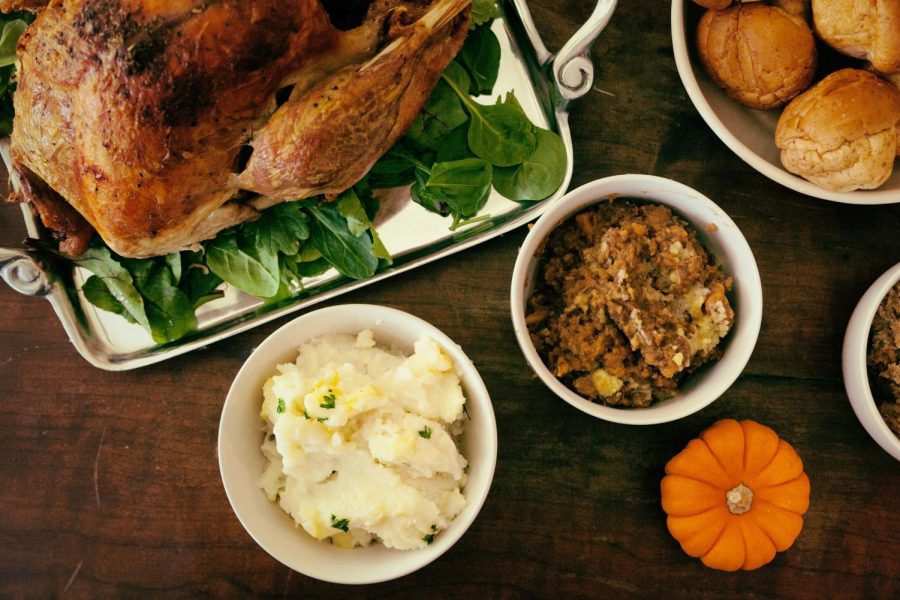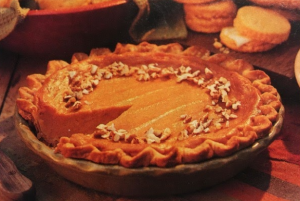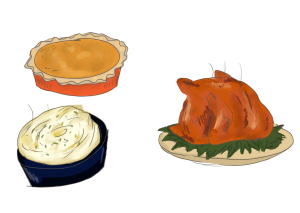Downsizing Thanksgiving in a year like no other
Photo courtesy of Pro Church Media under Creative Commons license
For many families, Thanksgiving celebrations will be much smaller this year because of COVID-19 travel restrictions.
November 24, 2020
Because of COVID-19, people have had to rethink how to get together with their family and friends for the holiday season. Thanksgiving is especially hard to plan out this year because it is usually a holiday that brings family, friends and communities together. Many students and their families have had to change their normal traditions to ensure that they celebrate the holiday safely.
According to the CDC, a person’s chance of contracting COVID-19 increases if they attend a gathering with people they do not already live with. However, if travel is necessary, the CDC says to wear a mask in public places, get a flu shot, social distance and practice good hygiene.
The CDC also recommends that before traveling, people should consider their family members’ risk of getting COVID-19, travel restrictions and the number of cases in the area they are traveling to. For gatherings, people should bring their own utensils, wear a mask, use disposable items (ketchup packets, plastic food containers, individually packaged plastic utensils, etc.) and avoid entering food preparation areas when possible.
For junior Sebastian Gagliardi and freshman Erica Muragaki, these guidelines mean altering their typical plans significantly.
Gagliardi usually attends two Thanksgiving dinners: one with his paternal grandparents and one with his maternal grandparents. “I would usually go to one of my grandparents’ house first and have dinner with them and my cousins, then the next day I would drive up to my other grandparents’ house and have dinner with that side of the family. It’s a lot of people there, like, we fill a room and go around like three tables,” he said. “Then, we would just hang out up there for a couple days and then come back down to Maryland.”
This year, his family will be scaling things back. “We are just going to have my parents and I, not even my brother because he is in New Jersey at college, for a smaller, quicker made Thanksgiving dinner,” he said.
Muragaki’s family normally has a smaller gathering of eight people, but like Gagliardi, they are still changing things. “We aren’t going to meet up with members of our family outside of our household. We’re probably just going to make a Thanksgiving dinner at home and eat on our own,” she said.
Muragaki’s family will also be cooking less food for their Thanksgiving dinner. “Although we aren’t usually the ones that host or the ones that cook most of the food, there is definitely going to be less food involved. Like maybe just turkey or ham, mashed potatoes, stuffing, your usual Thanksgiving food,” she said.
As reported by the CDC, over 1 million cases of COVID-19 were reported in the last seven days. “The biggest blame lies on selfish people who don’t social distance and wear masks, thinking they won’t catch it, or even worse, they don’t care if they catch it,” Muragaki said. “If people followed CDC guidelines, our numbers would be a small fraction of the millions of cases we have today. We would probably have a better Thanksgiving holiday with lighter restrictions if people heeded CDC guidelines at the beginning of the pandemic.”
Since some families are sticking to their usual plans, many people are concerned that Thanksgiving might make the COVID-19 situation worse. Gagliardi said, “Unfortunately, I think [Thanksgiving] definitely will [increase the number of cases], and I’m worried about the parts of my family that are choosing to have Thanksgiving in person. I can’t stop them, but they are putting themselves in danger.”
The CDC recommends staying home for Thanksgiving or hosting a virtual celebration. A virtual celebration could mean eating together with family members on a video call, or just calling family members to wish them a happy holiday. Nonetheless, according to a survey from Ohio State University, over 40 percent of Americans are planning to attend a gathering of 10 or more people over the holiday season.
Despite the rising cases and lonely holidays ahead, Muragaki is still in the Thanksgiving mood. “I’m thankful that nobody I know, myself included, has gotten sick. With the increasing number of cases, nobody can be too sure about whether or not they or anybody they know has caught it,” she said.






